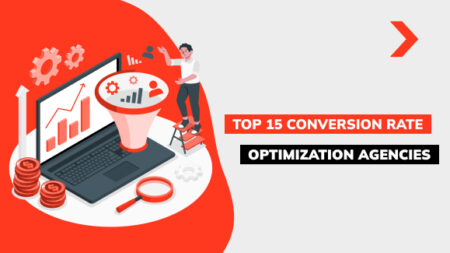Ecommerce Customer Journey Mapping
Consider following a customer journey from that particular search to the back and forth of adding and removing goods from the cart to make a purchase. These crucial phases are captured in a customer journey map, which also highlights the turning moments, hesitancies, and emotional highs.

This gives brands the information they need to design a more seamless and fulfilling ecommerce customer journey at each touchpoint.
In this post, we’ll walk you through the process of creating a thorough customer journey map for a company and go over how to assess and exploit it effectively.
What is the Ecommerce Customer Journey?
The customer journey stages, from the time they learn about its offerings to the point at which they select a particular choice, are referred to as the e-commerce customer journey.
Your customers are likely to benefit from a simple, easy-to-use web experience.
For example:
- Your product and pricing pages are clear and simple to use, the customer service representatives are easily accessible, and it loads swiftly and without any issues.
- The visitors may decide to leave the website if it loads slowly, the sites are hard to browse, or there are too many forms.

To figure out what they require at various touchpoints, it is necessary to visualize user interactions as a journey containing multiple stages.
Stages of the Ecommerce Customer Journey
A user journey encompasses the sequential stages a consumer takes, from realizing the need for a product to make a purchase from you. Every stage they go through is known as a customer touchpoint, and you can use them to provide a potential customer positive experience. The average digital shopping path may involve several channels and take several days.
1. Awareness Stage
At this stage, you can learn where customers are coming from, and what brought them to the website. This will allow you to determine the sites they are visiting and landing on, as well as the route that leads them from one page to another. This is a chance to find out what new clients require, namely what they are searching for on a website.
2. Consideration Stage
After finding something they like, the buyer starts looking around the property. This phase, also referred to as the deliberation stage, may be an excellent time to determine how to increase product browsing and lower bounce rates on your primary sites. As customers browse the options available, this stage offers an opportunity to discover how to assist them in finding what they’re looking for.
3. Decision Stage
It’s when the buyer purchases your product, often referred to as the conversion stage. This is the time to build a relationship with clients and find ways to improve customer service. This stage of the process is also an excellent opportunity to conduct a post-buy survey and gather input on what works for clients who have made a purchase.
4. Retention Stage
When a client returns, they might make another purchase, sign up for your newsletter, and receive customer-only perks and upsells. Customers should now be encouraged to interact on social media, promote loyalty programs, and provide benefits. This phase offers the chance to improve customer retention by persuading consumers to return and become advocates for your products.
5. Advocacy Stage
At this point, you have clients who are ardent supporters of the company. They are the ones who are prepared to tell their friends and family about the items. Put your attention on developing connections to draw potential customers nearer to the brand. Use a variety of avenues to interact with customers; phone conversations are an excellent way to build and preserve relationships.
Developing an Ecommerce Customer Journey Map
A visualization of customer engagement is called a customer journey map. It is utilized to identify the aspects of this process that may not be operating as efficiently as they need to.

“Touchpoints,” or certain aspects of user contact, are highlighted on the map. Each of these points (such as looking for a product, reading about it, purchasing it, waiting for delivery, and returning it if you’re not happy) can be categorized as either positive, neutral, or negative.
Steps to Building an Ecommerce Customer Journey Map
The process of customer journey mapping requires a variety of research methods, such as empirical data, client input, and innovative thinking.
When making a customer journey map, two essential components are needed:
- Identifying the goals of clients
- Knowing how to chart their nonlinear path
These points can then be used to deliver engagements. In the building process, take into account the following steps:
1. Adopt the Customer’s Perspective
By including a survey on the primary traffic pages, you can grasp the discovery or awareness stage and what first drew visitors to the website. You can figure out which channel a visitor came from by conducting a survey. It’s crucial information to take into account, if survey results suggest that you should try reaching a wider range of audiences.
2. Conduct Thorough Research
A popular place to start when trying to identify and enhance customer experience is with Google Analytics 4 (GA4) data. You may learn about visits, average time spent on each page, bounce and exit rates, and even how users use the “search” bar. The number of visitors who reached the checkout and the index of those who left must be known.
3. Gain Deep Understanding
Learn how customers navigate to generate sales. For example, if you give a discount code to all new visitors, why would sales be low? You can choose a path you want to investigate by using the Google Analytics funnel exploration report to identify this typical situation. Access the report, which provides you with an overview of the journey of clients.
4. Identify Goals and Pain Points
Finding the issues that customers face is essential to improving your product. It enables you to place the product as the answer to these issues and customize content. If you want to raise customer loyalty, you must take this step. Going straight to them is one approach to finding out what their pain spots are. Use market research to find out what issues clients face and what they want to access in the future.
5. Visualize the Journey
If the customer journey map is overly congested, it will no longer be as useful as it may be as a rapid reference tool. You’ll likely work on multiple user personas and customer journeys. Make a visual key to symbolize multiple customer journey stages of the journey, sentiments, and pain points because it is easy to get confused.
Prep Work for Mapping the Customer Journey
First, choose a path for which you want to make a customer journey map, then list the initial action that customers will take.

To define the behaviors, attitudes, on-stage and off-stage actions, and KPIs related to gauging the success of an event, you can also rely on templates. Before beginning, make sure you have addressed all of the following.
Define Clear Goals
Address a known problem or troublesome section of a website. Focus on anything that you can divide into manageable chunks. For example:
- Five calls to action are sufficient for a mappable trip if your drop-off rate is high.
- Your purchase flow is a good candidate for mapping if it’s made of five particular pages.
You should have a summary of what the map will cover and why at the end of this step, which you use to explain the purpose of this process.
Set the Scope of Analysis
The experience of a single persona in a single scenario with a single objective is ideal for journey mapping. If not, the map will be overly general and you will lose out on chances to ask questions and gain perspectives. Also, verify that your staff on the invite list are aware of the specifics of what clients encounter when utilizing the product.
Utilize Buyer Personas
Personals can be based on the most loyal clients or on new ones you have never worked with before. Though a persona goes beyond a marketing sector, if you are just beginning the mapping process, it can be a wonderful place to start. Personas, which are created from analytical data, or even user interviews, provide you with a deep understanding of clients.
Gather and Analyze Data
Access insights you will need to analyze as part of the mapping process after you have outlined your objective and scope. Avoid becoming sidetracked by broad data that are intriguing, but ultimately unimportant because the map has a limited focus. It gives you the information you need about user interactions and experiences at varied stages.
Constructing an Ecommerce Customer Journey Map
With the rise of social media, for example, Facebook ads can be the first point of discovery for clients of a store. With an emoji scale that shows user sentiments and the reasons behind them, this map highlights each of the contact points a client encounters along the way. Brands may gain areas for improvements, including alternatives and improving customer service, by looking at this map.
Outline the Core Framework
List all of the points that apply to each stage of interactions with the brand. A lot of retailers take a too-limited approach at this stage. Not just the website, but all potential points must be taken into account. An unfinished customer journey map will result from ignoring small channels or interactions.
Add Key Details for Deeper Insights
Instead of merely tracking interactions, focus on the needs and motivations of the client. Create distinct maps for every group of personas. Don’t make assumptions; instead, construct the map on actual customer data. Review your maps regularly to keep up with changing client expectations.
Why is the Customer Journey Important?
In short, it traces the customer journey through the sales funnel and generates a summary of the customer experience. As new assets are outdated, they can be improved upon, it is particularly helpful throughout the iteration and refinement process.

You can make full-scale adjustments to enhance already observed customer experience and increase conversions, retention, and online shopping sales by picturing customer behaviors, goals, sentiments, and difficulties as they engage with your products.
Enhancing the Customer Journey for Ecommerce Stores
Business owners often undervalue the significance of looking at consumer behavior, even though it is essential for sustained growth at every turn. By implementing these best practices, online store can offer a more clear and adaptable buying experience that fosters trust and credibility.
Implement Proactive Customer Support
To respond to client questions, incorporate a live chat function into a website or order tracking page. Live chat speeds up resolution times and eases customer support for those who need it. Provide chatbots to respond to frequently asked questions, elevating complicated issues to human agents.
Leverage Personalization for Better Engagement
The final sale revenue of retailers who personalize their websites has increased by up to 15%. Clients are more inclined to interact and make a purchase when they see product recommendations that align with their interests. It not only increases income but also raises bonds and turns them into advocates.
Collect Data and Adapt to Customer Needs
Improving the shopping experience needs the use of consumer data. You can gain important insights into the demands of your users across the ecommerce customer journey by regularly evaluating data. To keep abreast of consumer pain points, routinely gather feedback via support and post-interaction surveys.
Optimize Navigation for Seamless Browsing
Maintaining engagement and assisting them in making a purchase requires smooth website navigation. The user journey can be slowed down or frustrated by barriers on even user-friendly sites. User experience could be changed by updating a page with clear CTAs or simplifying the navigation so that there are fewer clicks to important pages.
Provide Clear and Transparent Product Details
Customers will be able to understand the value of a product and its potential benefits from a succinct description. Better products, a better customer journey, and higher sales are all made possible by product transparency; it grants that you provide the best value and encourages regular purchases.
Simplify the Checkout Process
Provide guest checkout, and accept a variety of payment types to streamline the checkout process. Customers are more likely to complete purchases when the checkout process is smooth and reduces friction. To save time, enable auto-fill for customer information such as local address and payment data.
Maintain a Responsive Customer Support Team
Consumers will stick with a company that responds to their requests promptly. You can build loyalty and trust by speeding up response times and effectively resolving problems with responsive customer support. This is the reason clients return for purchases. You should also keep current clients far less expensive than trying to acquire new ones.
Foster Post-Purchase Engagement
Customer support after a purchase is critical for building loyalty, lowering attrition, and converting one-time purchasers into devoted ones. Convert first-time buyers into loyal clients by putting post-purchase tactics into place. Give them specials, tailored discounts, or first dibs on new items. It raises customer lifetime value and cultivates enduring participation.
Build Trust with Social Proof and Credibility Signals
Social proof, such as reviews or testimonials is evidence that people have chosen your product. These are crucial strategies for online retailers and online stores to gain trust since they convey subliminal signals to buyers when they see that people have good online shopping experiences.
FAQ
How can online stores improve their user journey?
Your project team may produce a smoother and more fulfilling user experience by establishing personas, identifying touchpoints, and resolving pain spots visualized in your customer journey map. This lowers expenses for the company, boosts productivity, and enhances customer satisfaction.
What is an eCommerce customer experience?
The way the customers perceive your brand is known as the ecommerce customer experience. It is the result of their contact with customers throughout their lifetime. In other words, it encompasses the way the brand is viewed before, during, and following a sale.
How can I measure the ROI of improvements made to the customer journey?
The ROI can be computed by dividing the whole net gain by the total costs of the CX investment and then multiplying the result by 100 to calculate the percentage. ROI for each spend on the shopping experience is indicated by this percentage.
How can I improve my checkout process?
On websites, registration is a major cause of conflict. Provide a guest checkout process for a more seamless customer journey. Early on in the process, get the buyer’s email address. It will allow you to send the potential customer an email campaign with the goal of improving relationships.





